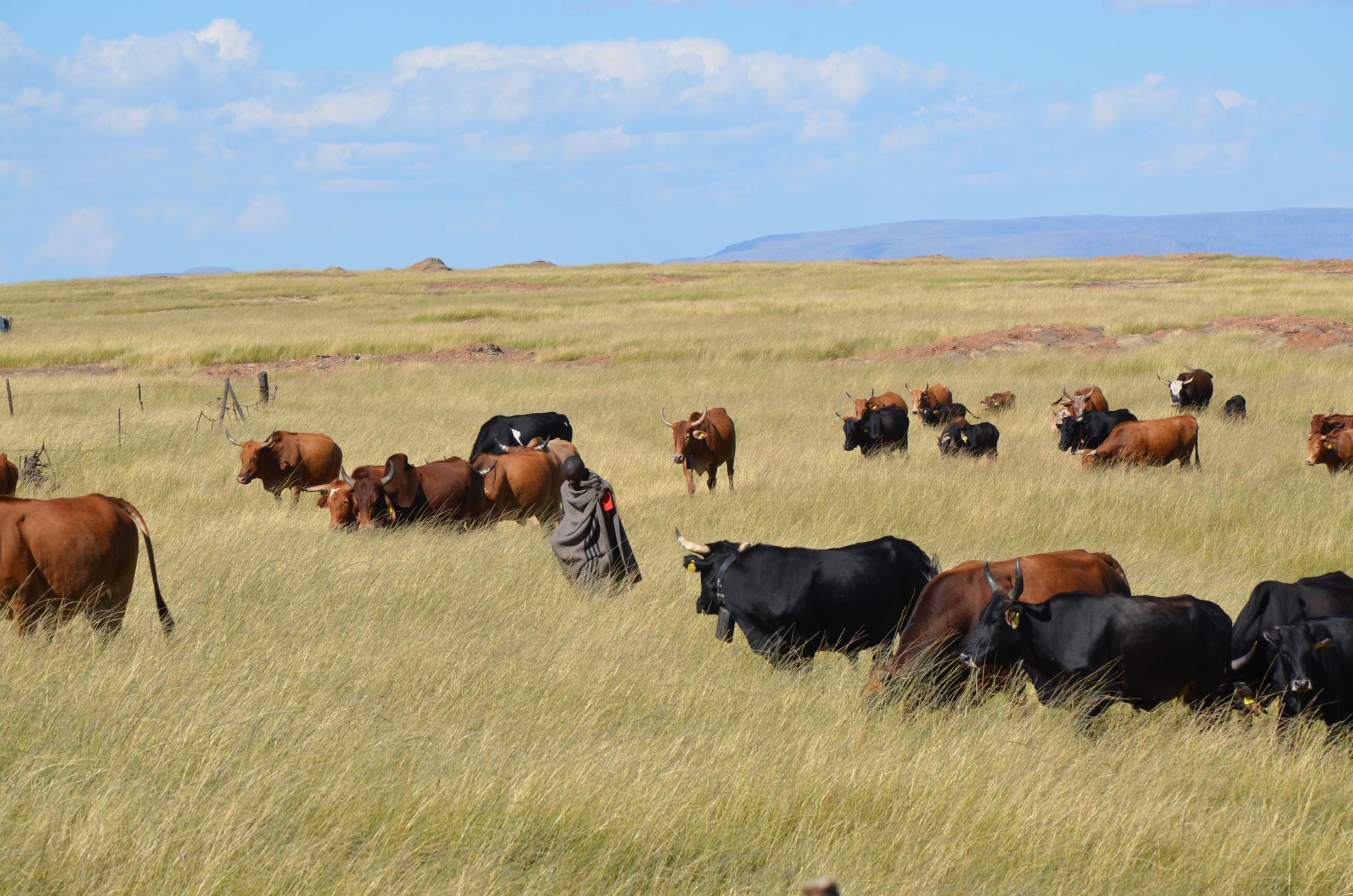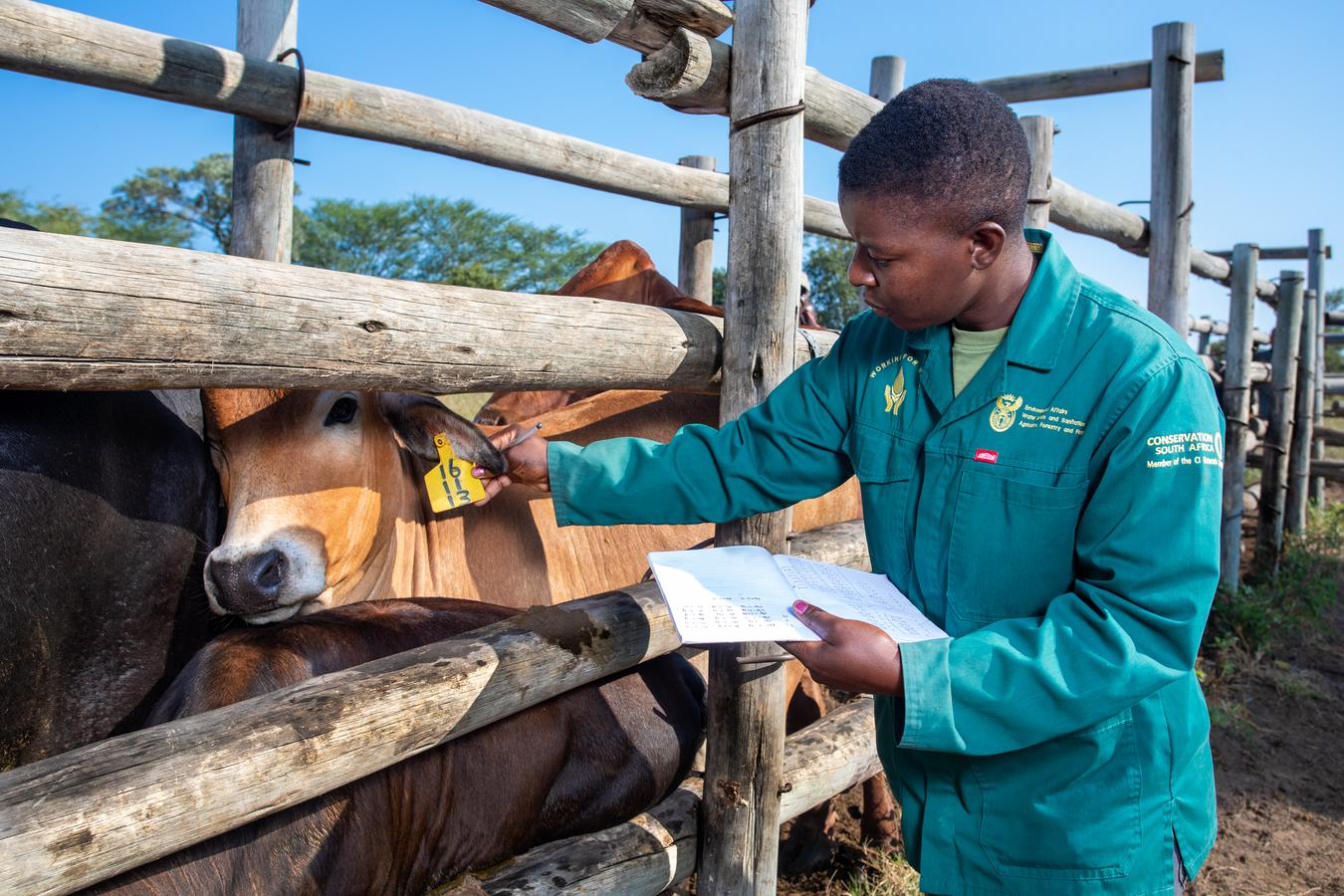
Promoting the sustainable stewardship of nature for all South Africans
Established as a Conservation International affiliate in 2010, Conservation South Africa works to help the most vulnerable rural communities protect and restore the oceans, grasslands, shrublands and savannas they need to thrive.
Working in key geographic areas that cover some 4 million hectares of grasslands, shrublands and savannas across the Namakwa District, the Alfred Nzo District and the Kruger to Canyons Biosphere — plus 100,000 square kilometers of ocean in the Inhambane Seascape — the team implements sustainable landscape management strategies to restore degraded ecosystems while supporting the development of green jobs and sustained economic growth. These efforts focus closely on poor and vulnerable communities that raise cattle, sheep and goats on communal lands, as well as coastal fishing communities in Namakwa.
Through partnerships with local communities, NGOs, government, academia and national policy makers, the team aims to unlock further funding for green development and scale these strategies across Africa. By 2030, Conservation South Africa will help create 30,000 nature-positive jobs that will support the protection and sustainable management of an additional 2 million hectares.
Conservation South Africa has two support offices in Cape Town and Johannesburg. Our field offices are in Matatiele, Hoedspruit, Springbok and Port Nolloth.
2010
YEAR FOUNDED
1.4M
PEOPLE
dependent on nature in South Africa1
203M
METRIC TONS
of irrecoverable carbon in South Africa2
256
VERTEBRATE SPECIES
that are endemic to South Africa3
To scale conservation, we need long-term, innovative funding that empowers people and builds independence. Our work proves that when communities have the tools to lead — through nature-positive livelihoods, sustainable finance and strong local capacity — conservation becomes more than a project. It becomes a way of life.”
Areas we work

Restoring native rangelands — for communities, by communities
Southern Africa’s sweeping savannas, grasslands and shrublands support some 50 million farmers, provide habitats for some of Africa’s most iconic wildlife and store large amounts of planet-warming carbon. But these lands are under threat from expanding settlements, overgrazing and a warming climate.
The (H4H) program, a community-driven livestock management model created by Conservation International and Peace Parks Foundation, aims to reverse these trends by helping farmers graze their livestock in a way that allows the land to rest and recover. As native grasses grow back, they provide renewed habitats for wildlife and grazing for livestock, while also developing extensive root systems that sequester climate-warming carbon deep underground. With more grass to eat, cattle, sheep and goats arrive at market healthier, fatter and much more likely to command a premium price. Through partnerships with , livestock owners are connected to buyers through mobile auctions, shearing and abattoirs, ensuring fair prices for their meat and wool.
As part of the H4H initiative, our Jobs for Nature program supports women and youth through job creation and enterprise development. Jobs for Nature helps marginalized groups build financial independence, creating sustainable livelihood opportunities beyond livestock ownership. The program was modeled successfully at Conservation South Africa’s demonstration sites and is now being scaled to 7 million hectares (17 million acres) in seven countries in Africa in partnership with several implementing agencies.
References
- Fedele, G., Donatti, C. I., Bornacelly, I., & Hole, D. G. (2021). Nature-dependent people: Mapping human direct use of nature for basic needs across the tropics. ScienceDirect, 71. https://doi.org/10.1016/j.gloenvcha.2021.102368
- Conservation International (2021, November). Irrecoverable Carbon. Retrieved January 2025, from https://www.conservation.org/irrecoverable-carbon
- The IUCN Red List of Threatened Species. (2024). Table 8a: Total, threatened, and EX & EW endemic species in each country [Fact sheet]. https://www.iucnredlist.org/resources/summary-statistics#Summary%20Tables